

Welcome to the fourth installment of Archinect's new series, State of AEC. At the end of each month, we will guide you through the latest analyses, indexes, and trends on how the architecture and construction industries are performing economically.
Since our last edition, the U.S. Federal Reserve announced its first interest cut in four years, lowering its rate by half a percentage point. In previous editions of this series, we noted that many commentators had expressed hope that such a move would begin to reverse the fortunes of firms that, as can be seen in the data published below, continue to see declining billings. As we noted in a recent feature published after the rate cut, history tells us the move will indeed have a positive impact on architectural business conditions, though it may be several months before such an impact is felt.
Read our full roundup of the month's economic and business figures below and find out more about how the business health of the architecture profession is faring via our recently released survey results here.
Design and Planning
The latest AIA/Deltek Architecture Billings Index (ABI), covering August, found that billings are continuing to decline at a majority of firms, and at a faster rate than the month before. The index score of 45.7 indicates that more firms reported a decline in billings in the previous month than reported an increase. While billings declined, firms are continuing to see an increase in new inquiries, as they have done for the past year. The dollar value of new contracts signed has decreased, however, with marginally more architecture firms saying that contract values declined last month. As with billings, the rate of decline in new design contracts has slowed.
“Unfortunately, even the impending interest rate cuts didn’t move the needle on project inquiries or new design contracts at architecture firms,” AIA Chief Economist Kermit Baker said about the latest figures. “Hopefully, once the trajectory of further cuts gets clarified, delayed projects will restart, and new projects will gather momentum.”
In recent editions of Archinect’s State of AEC, we have noted the hope among AEC commentators that the U.S. Federal Reserve would move to cut interest rates, which have remained at a two-decade high. After the Fed followed through and cut interest rates last month, we published a feature article analyzing what the move means for architects. Our summary findings were that although the rate cuts will have a positive impact on architectural business conditions, it may be several months before such an impact is felt.
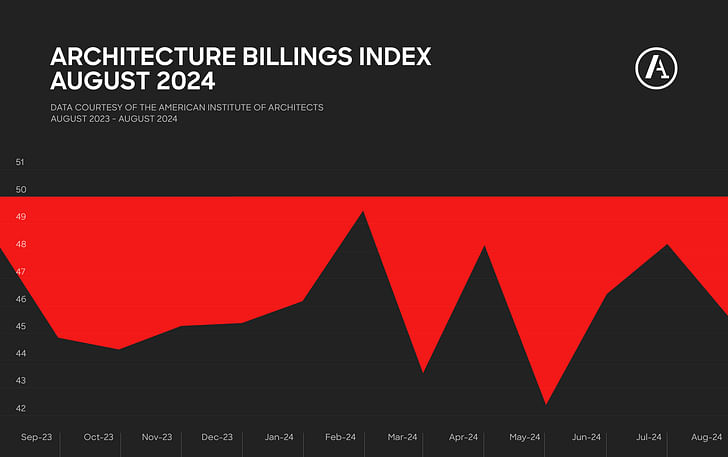
Elsewhere, August's Dodge Momentum Index, which measures the value of nonresidential building projects going into planning, saw a 2.9% increase on the previous month. The index now sits at one of its highest figures in recent years, as it did last month, and disrupts a general trend of nonresidential planning decline throughout 2024. The Dodge Momentum Index now sits 31% higher than this time last year.
“Owners and developers continued to prime the planning queue in August, ahead of next year’s anticipated stronger market conditions,” Sarah Martin, the associate director of forecasting at Dodge Construction Network, said. “With the Fed’s September rate cut all but finalized, the influence of selective lending standards and inflation should moderate next year, alongside a modest upgrade to consumer demand. As a result, stronger planning activity was widespread in August, with most nonresidential sectors seeing growth.”
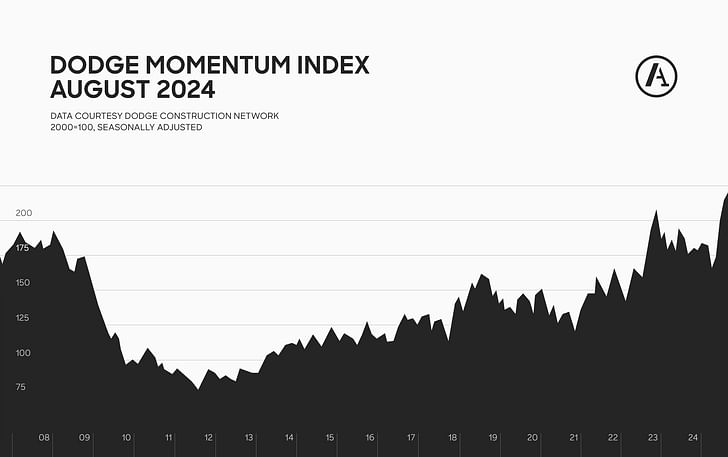
Construction
Overall, total construction starts across the United States rose 6% last month, according to Dodge Construction Network. For the 12 months ending August 2024, total construction starts are up 4% from the 12 months ending August 2023.
“Construction starts continue to move forward at a modest pace,” Dodge chief economist Richard Branch said. “Now that the Federal Reserve has begun to lower rates the construction sector should begin to feel relief. The Dodge Momentum Index has been steady, indicating that owners and developers feel reasonably confident that market and financial conditions will improve. Improve they will, but it will take successive rate cuts before they feel comfortable moving these projects forward to start. Starts should show stronger and more consistent growth in the first quarter of 2025.”
While construction activity increased last month, so did the cost of producing materials for construction, albeit marginally. Data from the U.S. Bureau of Labor Statistics showed that construction input prices increased by 0.1%, including a 3.1% increase in softwood lumber and a marginal 0.2% decrease in concrete products.
“Construction input prices are now down almost a full percentage point over the past year,” Associated Builders and Contractors Chief Economist Anirban Basu said. “This is a welcome development for contractors, a plurality of whom now expect their profit margins to contract over the next six months, according to ABC’s Construction Confidence Index. Moderating materials price escalation, along with easing labor constraints and the near certainty that the Federal Reserve will begin lowering interest rates at its next meeting, should provide some relief to contractors over the next several months.”
Elsewhere, project delays, pauses, and abandonments in the non-residential sector experienced a significant decline last month. ConstructConnect’s latest Project Stress Index saw a 6.3% decrease in its August metric compared to July, with disruption 17% down on August 2023.
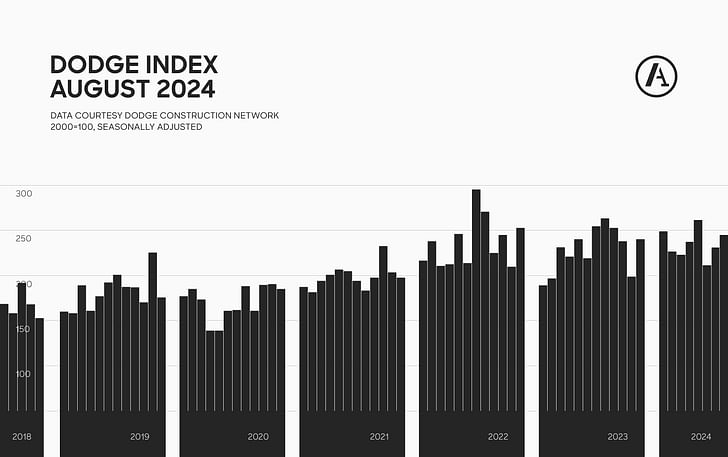
Northeast
Architecture firms in the Northeast told the AIA ABI that business conditions have remained largely steady, with August showing a minor decrease in billings from the previous month. The previous three months saw billings in the Northeast sitting in or around 50 points; its first showing in positive territory for a year.
Total construction starts in the Northeast increased last month, according to Dodge Construction Network, while U.S. Census data shows that residential unit permits granted increased by 3% on last month but decreased 10% on August 2023, seasonally adjusted.
Midwest
According to the ABI, business conditions in architecture firms in the Midwest are in decline, though the rate of decline has slowed considerably and consistently since April. August’s score of 46.6 is the highest score experienced in the Midwest since February.
Total construction starts in the Midwest decreased last month, according to Dodge Construction Network, while U.S. Census data shows that residential unit permits granted increased significantly by 12% on last month but decreased 3% on August 2023, seasonally adjusted.
West
Firms in the West region have seen a continuing decline in business conditions in the ABI, though the decline rate is slower than last month. The West is nonetheless the poorest performing U.S. region for billing trends and continues to see the longest duration of decline of any region, at 23 consecutive months.
Total construction starts in the West nonetheless increased last month, according to Dodge Construction Network, while U.S. Census data shows that residential unit permits granted decreased marginally by 1% on last month and a more seismic 20% on August 2023, seasonally adjusted.
South
Firms in the South region have continued a 14-month trend of reporting that business conditions have worsened in the previous month, according to the ABI, though, as with the West and Midwest, the rate of decline has slowed, and the South now displays the second-strongest business conditions of any region, behind the Northeast.
Total construction starts in the South increased last month, according to Dodge Construction Network, while U.S. Census data shows that residential unit permits granted increased by 5% on last month but fell 3% on August 2023, seasonally adjusted.
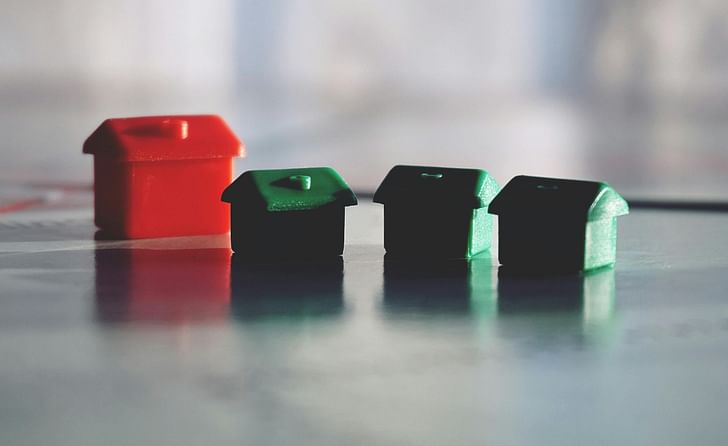
Residential
According to the ABI, firms specializing in multifamily residential projects have continued to see a decline in billings. Such firms have not reported an increase in billings from the previous month since August 2022.
On the construction side, the number of residential starts rose by 5%, according to Dodge Construction Network. For the 12 months ending August 2024, residential construction starts were up 8% from the 12 months ending August 2023.
Digging deeper into the residential sector, single-family starts rose by 7%, according to Dodge, while multifamily starts rose by 1%. Over the past twelve months, single-family starts have risen 17% versus the previous twelve-month period, although multifamily starts were 10% lower.
Commercial/Industrial
Firms specializing in major non-residential sectors have reported a decline in billings in the previous month. According to the ABI, firms specializing in commercial/industrial projects continue to see a deterioration in billings, though not as severely as the previous month. The last time such firms reported an increase in billings in the previous month was July 2023.
Despite a decline in billings for commercial projects, the value of commercial projects currently in planning has risen by 1.9% on last month, according to the Dodge Momentum Index, with the value of such projects up 42% on this time last year.
In construction, commercial starts are down 32% on last month. Meanwhile, industrial project starts declined 21% on July. For the 12 months ending in August 2024, commercial starts are down 7% more than the previous 12 months, with industrial starts being down 16%.
Institutional/Cultural
Firms specializing in institutional projects continue to report a decline in billings, according to the ABI. Such firms have nonetheless reported a decline in billings almost every month since July 2023, with the sole exception of January 2024, where billings were stagnant on the previous month.
Despite a decline in billings, there has been an increase in the value of institutional projects currently being planned. The Dodge Momentum Index reports that the value of planned institutional projects has increased 5.7%, while the value of such projects is up 8% on this time last year.
In construction, institutional starts rose 31% in August, according to Dodge Construction Network, while for the 12 months ending in August 2024, institutional starts are up 13% from the previous 12 months.
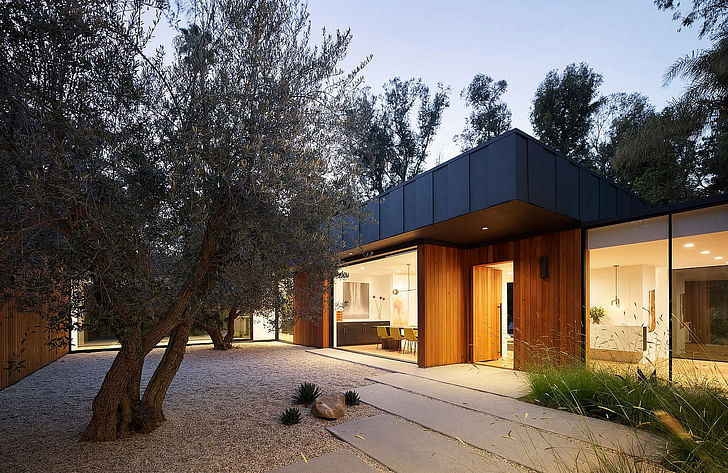
“Yes, it does have an impact,” former HOK CEO Patrick MacLeamy told me in a recent conversation in response to my question on whether Fed interest rate cuts traditionally have a positive impact on the industry. “However, it is not instantaneous. It will take months to ripple through the economy.
“For a client to decide that they can now borrow money more cheaply and build the building they want, it is going to take six months [from the Fed’s announcement].” MacLeamy added. “Don’t count on it as an instant turnaround; it’s too macroeconomic.”
“You’ll hear a buzz from contacts or industry organizations,” financial firm Anchin partner Phillip Ross told me for the same piece. “You might hear that ‘Developer A’ will start new projects after another half-point cut, while ‘Developer B’ is waiting for rates to fall even lower.”
Share your own experiences of the AEC sector in the comments section below. When doing so, please tell us which U.S. Census region you are based in (Northeast/Midwest/West/South) and the size of your firm.
Finally, Archinect recently revealed the results and analysis of our survey on business conditions in the architecture industry. The results can be found here, while our analysis of the five factors behind the conditions can be found here.
Niall Patrick Walsh is an architect and journalist, living in Belfast, Ireland. He writes feature articles for Archinect and leads the Archinect In-Depth series. He is also a licensed architect in the UK and Ireland, having previously worked at BDP, one of the largest design + ...
No Comments
Block this user
Are you sure you want to block this user and hide all related comments throughout the site?
Archinect
This is your first comment on Archinect. Your comment will be visible once approved.